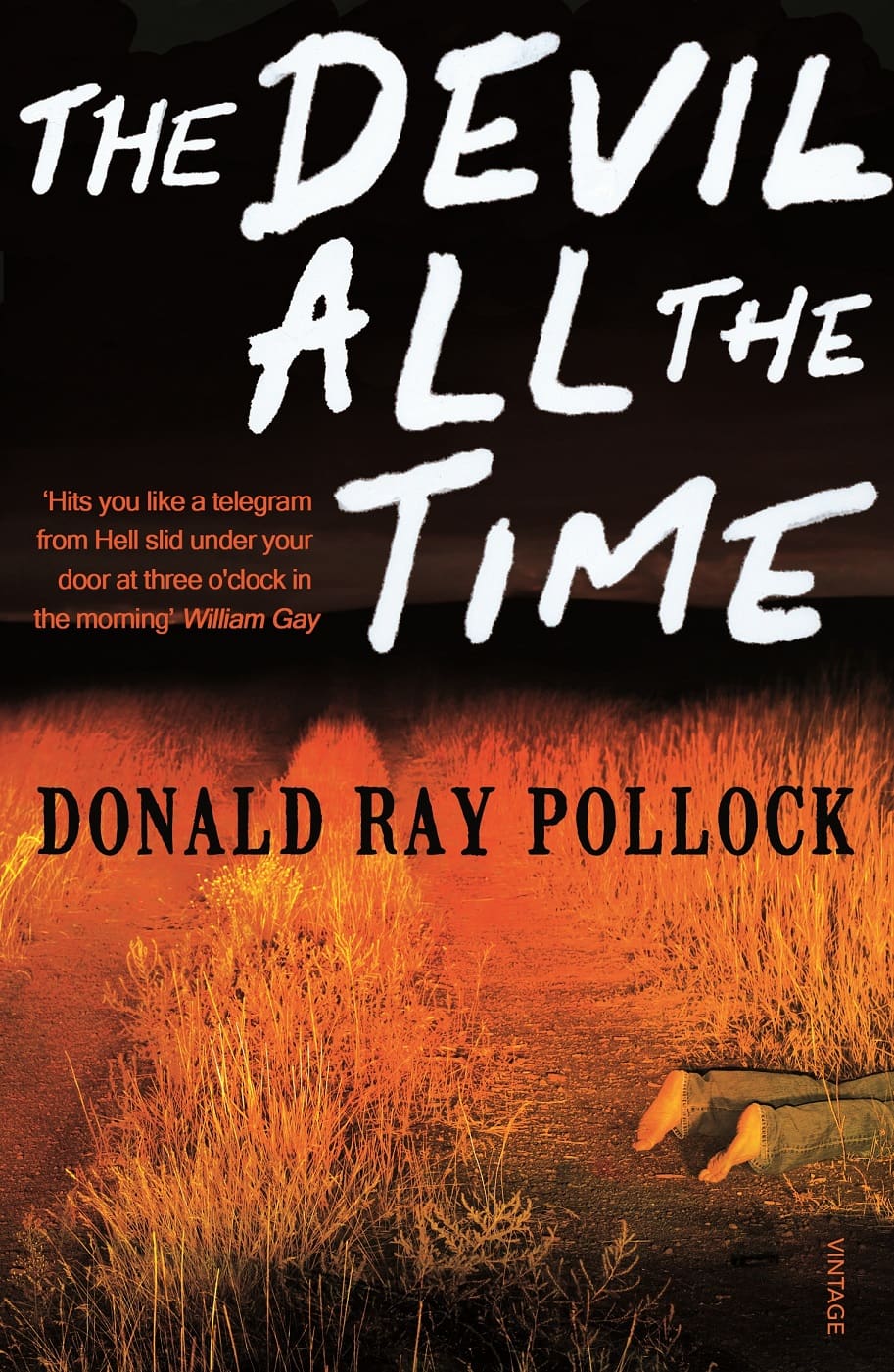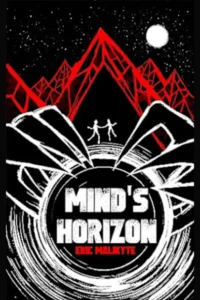
Synopsis:
Set in rural southern Ohio and West Virginia, The Devil All the Time follows a cast of compelling and bizarre characters from the end of World War II to the 1960s. There’s Willard Russell, tormented veteran of the carnage in the South Pacific, who can’t save his beautiful wife, Charlotte, from an agonizing death by cancer no matter how much sacrificial blood he pours on his “prayer log.” There’s Carl and Sandy Henderson, a husband-and-wife team of serial killers, who troll America’s highways searching for suitable models to photograph and exterminate. There’s the spider-handling preacher Roy and his crippled virtuoso-guitar-playing sidekick, Theodore, running from the law. And caught in the middle of all this is Arvin Eugene Russell, Willard and Charlotte’s orphaned son, who grows up to be a good but also violent man in his own right.
Review:
“The Devil All The Time,” by Donald Ray Pollock is, perhaps tied with “Paradais,” by Fernanda Melchor, for my bleakest read of 2025 so far. Like a gritty and nihilistic “Love Actually,” “The Devil All the Time,” follows a web of interconnected lives. The similarities stop there. Rather than being full of festivity and redemption, “The Devil All The Time,” offers only an unapologetic and uniquely American brand of roadhouse violence and misery. The narrative is made up of a series of bloody strands that are knotted by Pollock into a coalescing snarl of misfortune- a tangle that is tightened with each chapter that passes. A truly horrible chain of events, the jigsaw pieces Pollock carefully slides the reader, do not form a pretty picture. By the time he hands us the final piece to click into place, we (futilely I’m afraid to say) pray that it doesn’t fit.
Carl and Sandy travel the South picking up hitch-hikers, before brutalising them and snapping photos for their mounting collection. Roy and Theodore are a pair of “pastors,” who perform sermons not quite like anyone else. Encouraged by Theodore, Roy, believing that he is able to bring people back from the dead, murders his wife, and upon realising this was misguided, runs, abandoning his baby girl. Willard Russell is a hyper-religious Vietnam war veteran who following the cancer diagnosis of his beautiful wife Charlotte turns to sacrificing animals and dousing his “prayer log,” in blood. Leo Bodecker is a recovering alcoholic determined to survive the next election and stay sheriff, despite what people say about him. Reverend Sykes refuses to admit that he is dying, but is certainly mighty ill, and takes a leave of absence, leaving his nephew Preston Teagardin, who is a man of God in name only, in charge of his flock. What do all of these things have in common? Well, they’re connected by Arvin Eugene Russell, who we watch grow from a troubled child to a troubled man. It’s like “A Series of Unfortunate Events,” for adults.
To varying extents, although none of them mild, every character in this book is really, deeply, irreparably not okay. From pedophilia to greed to sadism to religious fervor to just pure mania, this is a cast that covers the seven deadly sins and beyond. Toward the beginning of the novel, the series of separate, miserable lives, flickering across Ohio and West Virginia, could very well be a short story collection, with overlapping themes of small towns and religion and a shared stale-smoke, bourbon-soaked, bible-thumping back-drop. It doesn’t take long though, for their paths to cross (as we know they must) in a cruel kind of predestination that I would call doom rather than fate.
I hate to sound condescending or derogatory, as someone who read this book and is writing this review outside of the US, but ultimately, the American (Mid-western) Gothic here is not romantic, or even, symbolic, but infrastructural. Towns like “Meade,” and “Knockemstiff,” read like caricatures, yet disturbingly… are not. The horror stems from the characters, and their attitudes undeniably stem (to a degree) from the economy and the environment- the roads, the air, hell, even the name “Knockemstiff.” Whether it’s Carl and Sandy returning home after a bloody vacation, or Arvin who is passed around between the two towns, but doesn’t venture beyond, just about everyone wants to escape from the urban, sulphur-smelling, apathetic appalachia they find themselves in, and most don’t manage it. Those that do, find more of the same. So what is it that unites such a sprawling cast of murderers, zealots, and grifters? Yearning perhaps. Transcendence, absolution, a half-decent mattress? The characters have the same American pathology, the idea that suffering means something, and righteousness can be proven through spectacle. Everything about the place is ugly. It’s unsurprising that the characters within it are too.
A slow-moving back-water apocalypse, like most utterly devastating novels do, “The Devil All The Time,” pulls us into its riptide, and allows us to thrash and claw and cry out in vain, before spitting us out shivering and feeling rather sorry for ourselves. The sun is out- here in the UK at least- and if you need a reminder that happiness is fleeting, and the world is in reality, not a sunny place, this one has exactly that effect. Enjoy!









Leave a Reply